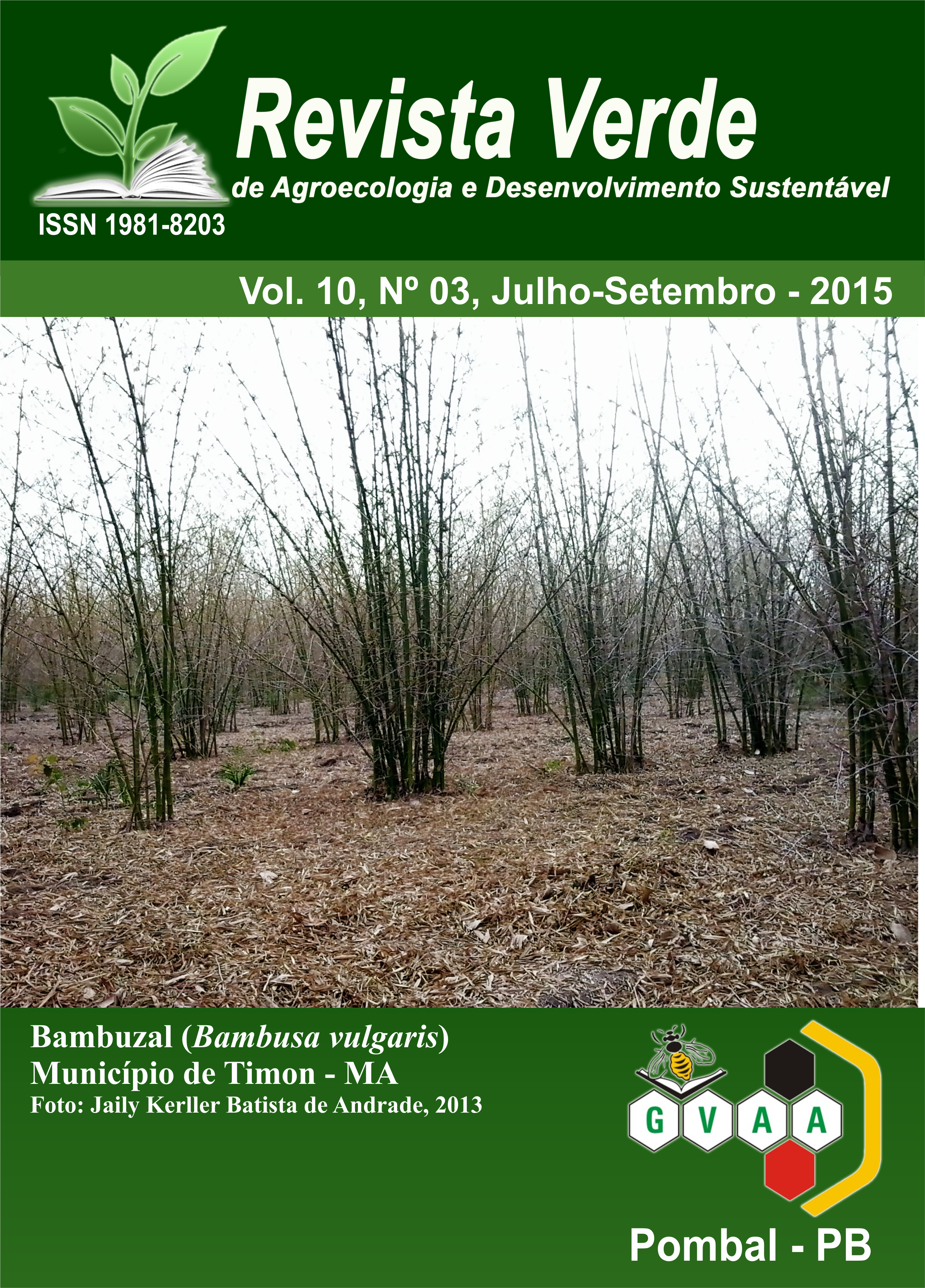Potencial produtivo de carvão vegetal da espécie Bambusa vulgaris Schrad. cultivado em Timon, Ma
DOI:
https://doi.org/10.18378/rvads.v10i3.3619Keywords:
Biomassa Florestal. Fontes Energéticas. BambuAbstract
Em decorrência da escassez de madeira para produção energética, alguns setores tem se empenhado com grandes esforços para a produção de seus próprios insumos. Uma alternativa a essa problemática é a utilização do bambu na produção de carvão vegetal, pois é uma espécie tolerante aos mais variados tipos de ambientes e apresenta boa capacidade produtiva. Nesse contexto, o presente estudo teve como objetivo avaliar o potencial produtivo de carvão vegetal de Bambusa vulgaris Schrad. cultivado em Timon, MA. As amostras foram coletadas num bambuzal de 48,56 ha dividido em quatro talhões (tratamentos), no município de Timon, MA. Em seguida, levadas ao Laboratório de Tecnologia da Madeira da UFCG/CSTR onde se determinou a densidade básica dos colmos do bambu, o rendimento em carvão, rendimento em líquido pirolenhoso, gases incondensáveis e análise química imediata. A densidade básica média do bambu foi de 490 kg/m3, não apresentando diferença significativa entre as médias dos quatro tratamentos. O rendimento médio em carvão vegetal foi de 39,05%, sendo que os tratamentos 1 e 4 apresentaram os maiores valores, com médias de 40,34% e 39,85%, entretanto não diferiram estatisticamente. O rendimento médio em gases condensáveis foi de 12,17%. A densidade aparente variou de 1,945 a 2,833 g/cm3. Os teores médios de materiais voláteis, carbono fixo e rendimento em carbono fixo foram respectivamente 28,55%, 64,11% e 25,04%, não apresentando diferença significativa entre os tratamentos. De acordo com as análises realizadas, verificou-se que o carvão vegetal produzido a partir dos colmos de Bambusa vulgaris Schrad. possui potencial para comercialização e utilização como fonte energética.
Productive potential of species Bambusa vulgaris Schrad. charcoal grown in Timon, Ma
As a result of the scarcity of raw material (wood) for the production of energy, some sectors have committed themselves with great efforts to produce their own inputs. An alternative for this problem is the usage of bamboo in the production of vegetable coal, as it is a species which is tolerant to various types of environment and presents a good productive capacity. In this context, the present study aimed to assess the production potential of vegetable coal of Bambusa vulgaris Schrad, cultivated in Timon, MA. The samples were collected in a bamboo grove of 48,56 ha divided into four stands (treatments), located in the municipality of Timon, MA. Subsequently, taken to the Laboratory of Wood Technology of the UFCG/CSTR, where the basic density of the bamboo poles, the efficiency in the conversion into coal, efficiency in pyrolysis liquid, incondensable gases and immediate chemical analysis were determined. The average basic density of the bamboo was of 490kg/m3, not presenting significant difference between the averages of the four treatments. The average yield in vegetable coal was of 39,05%, and the treatments 1 and 4 presented higher values, with averages of 40,34% and 39,85%, however they did not differ statistically. The average yield of the condensable gases was of 12,17%. The apparent density varied from 1,945 to 2,833 g/cm3. The average contents of volatile materials, fixed carbon and fixed carbon efficiency were respectively 28,55%, 64,11% and 25,04%, not presenting significant difference among the treatments According to the analysis carried out, it was verified that the vegetable coal produced from the poles of Bambusa vulgaris Schrad. has potential for commercialization and use as an energy source.











